用于极细同轴线束的Paddle Card技术 – 改善 SI 性能
背景
基础设施电信设备(如服务器和交换机)在企业市场中的应用快速增长。 因此,必须提高这些系统中使用的每个组件的信号完整性 (SI) 性能。SI 性能的改进可以提高设备的性能。 挑战在于,传统的 PCB 走线传输具有较大的插入损耗和有限的传输距离。使用电缆来解决这些问题的跳线线束作为一种可能的解决方案而受到关注。 图 1 是从 ASIC 到 I/O 的传统 PCB 走线传输。图 2 是从 ASIC 到 I/O 的跳线线束传输取代图 1 中的 PCB 引线。该解决方案通过使用扁平连接器最大限度地减少 PCB 走线长度来减少传输损耗,该连接器可以放置在散热器下方的位置(更靠近 ASIC),并使用直接端接的电缆连接到 I/O 连接器。
挑战
必须在降低连接器高度的同时改善传输损耗是此解决方案的前提。降低连接器高度尺寸的原因是需要将连接器放置在散热器下方,使其更靠近 ASIC(如图 2 所示),以减少传输损耗。传输速度假设为 64 Gbps PAM4(频率 16 GHz)。
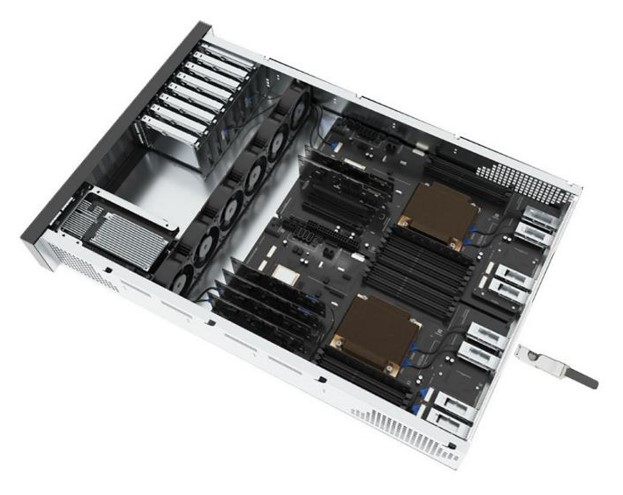


现有的极细同轴线连接器产品在 13 GHz 左右没有传输质量问题。 但是,在 17 GHz 的目标频率附近发生共振,导致传输质量下降。表 1 和表 2 显示了传统产品的近端串扰 (NEXT) 和远端串扰(FEXT)。红色圆圈表示共振点。
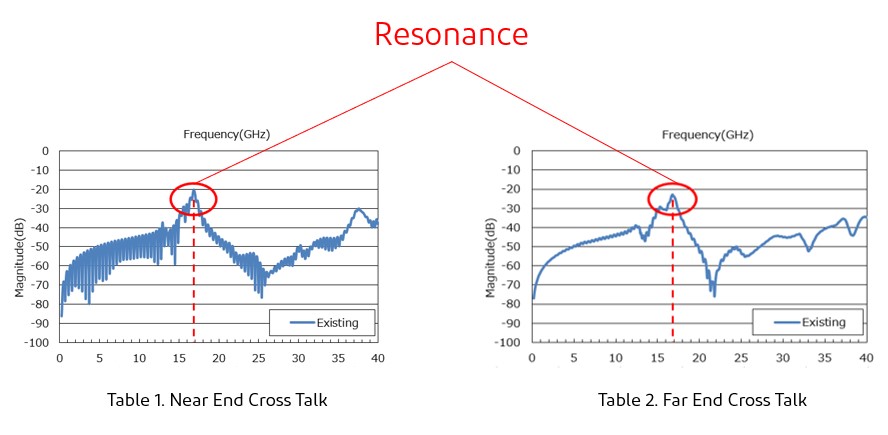
发生的谐振频率取决于接地返回路径的长度。 如果波长 “λ” 很长,则表示谐振频率出现在低频带。 相反,如果波长 “λ” 较短,则表示谐振频率出现在高频带。 图 3 显示了传统极细同轴线连接器产品的公座和母座的嵌合状态的结构。由于连接器的结构,接地路径不容易设置。电缆和端子接地路径通过接地手指连接。绿色区域表示谐振区域。
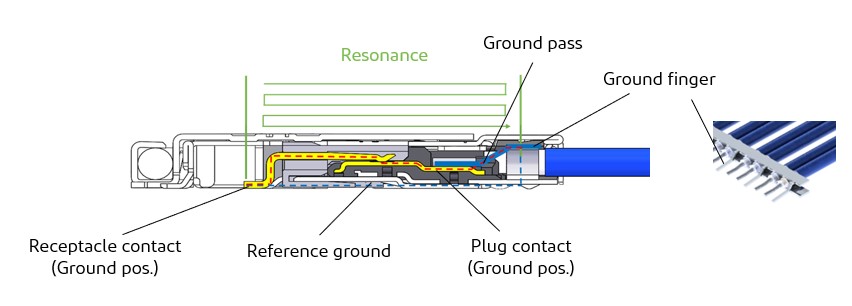
对策
通过用paddle card(FPC)替换现有的插头连接器,可以轻松安装接地路径。 这可以使接地路径更强和接地指谐振区域更短。绿色区域表示谐振区域。
PADDLE CARD是什么?
Paddle card可与其匹配的连接器组合,并且可以根据公座电路设计 PCB 或 FPC。Paddle card易于添加到接地结构中,从而改善接地回路。 阻抗匹配得到简化,信号完整性在较高频率下得到改善。 图 4 显示了传统极细同轴线束的外观。 图 5 显示了带paddle card的极细同轴线束的外观。嵌合的端子(焊盘)在paddle card上配置。
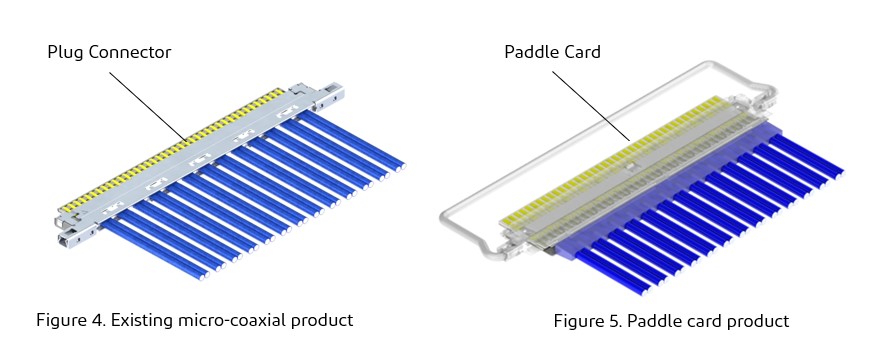
图 6 显示了paddle card产品的公座和母座再嵌合情况下的结构。 可以通过paddle card (FPC) 设置许多接地路径,从而赋予其更大的设计灵活性。 绿色区域表示谐振区域。
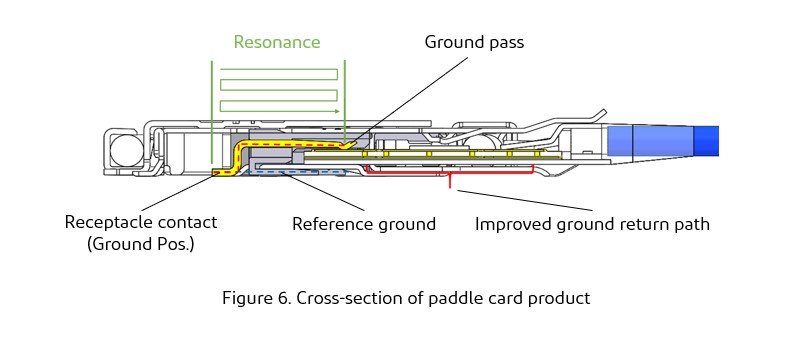
通过使用paddle card,可以根据特定要求调整信号线宽度,并且可以轻松匹配特性阻抗。图 7 显示了连接到 Paddle Card 的极细同轴电缆。 paddle card与线缆的连接方式是通过焊接实现的。 paddle card端子的宽度必须很宽,以便与母座进行嵌合接触。 在非接触区域,端子可以更窄,以支持特性阻抗控制。
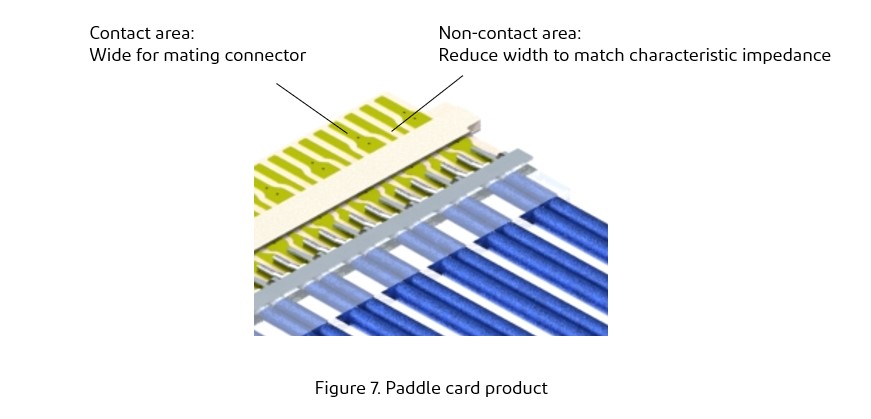
成效
传输特性、模拟条件
分析软件:Ansys HFSS 19.0
- 频率:0-40 GHz
- 电缆:极细同轴电缆,AWG #36,42.5 欧姆
- 电缆长度:254 毫米(10 英寸)
- 两端连接器
- 引脚分配:GSSGSSGSSG(G:接地,S:信号)
・改善后的特性阻抗
现有产品为 73 ohm-94ohm。但是,paddle card产品为 84-87 欧姆。 表 3 显示了使用paddle card的传统产品和改良产品的特性阻抗比较。
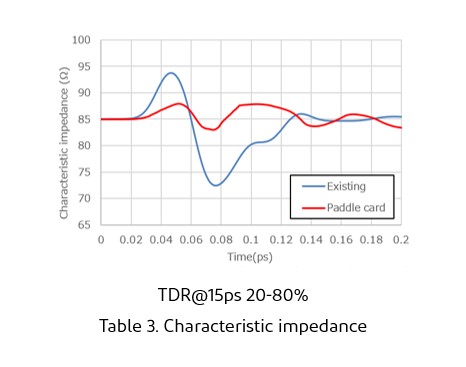
・改善后的 NEXT 和 FEXT
Paddle card产品可以改变谐振频率。
如下表所示,谐振频率已从 17 GHz 移至 33 GHz频段。 因此,现在可以传输到 25 GHz 频段。表 4 和表 5 显示了 NEXT 和 FEXT 的结果。 这些是现有产品与带有Paddle card的改良产品之间的比较。红色圆圈表示共振点。

・改良后的插入损耗和回波损耗
此外,通过提高特性阻抗,还可改善插入损耗和回波损耗。 表 6 和表 7 显示了插入损耗和回波损耗的结果。 这些是现有产品与带有paddle card.的改良产品之间的比较。
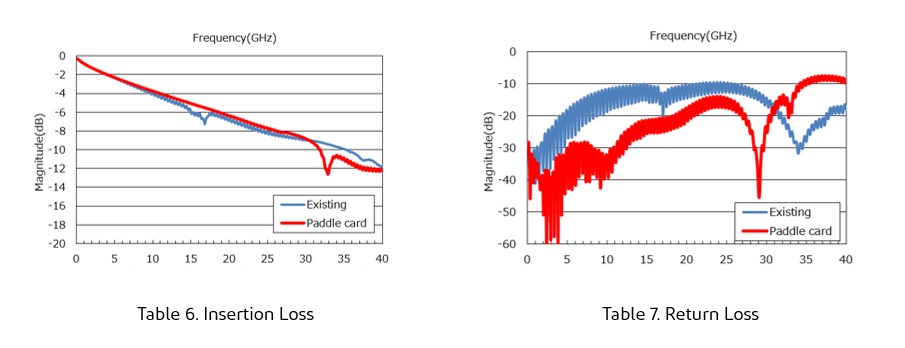
总结
这些测试证实了 SI 性能已通过从现有产品更改为paddle card而得到改善。在服务器和交换机等内部空间受限的布局中,具有较高 SI 性能的paddle card结合较低高度的连接器是一种有效的解决方案。
CABLINE®-CAP 产品页面: https://www.i-pex.com/zh-cn/product/cabline-cap
